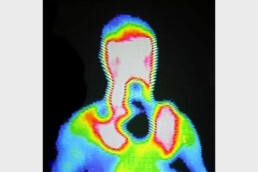Power from motion and vibrations
Forget about batteries. The ability to harness electricity from tiny vibrations could power a new generation of electronic devices.
This is the second of a series about MIT research on harnessing micro-sources of power (part one can be read here).
The Trans-Alaska Pipeline System, which traverses hundreds of miles of some of the most inhospitable terrain on Earth, must be monitored almost constantly for potential problems like corrosion or cracking. Humans do some of this work — surveying the pipeline from the air and inspecting it more closely in the areas that can be easily accessed by roads — but the bulk of it is done by mechanical “pigs,” sensor-laden robots that travel inside the pipeline looking for flaws.
A simpler process might involve outfitting remote stretches of the pipeline with sensors that would automatically radio a warning of impending problems. But the need to periodically change the batteries on such sensors lessens the appeal of that option. For electronic devices in remote or inaccessible situations like this, including environmental or mechanical monitoring sensors as well as some kinds of biomedical monitors, it can be inconvenient or even impossible to replace batteries.
Self-powered sensors
Harvesting electricity from small temperature differences could enable a new generation of electronic devices that don’t need batteries
It can be inconvenient to replace batteries in devices that need to work over long periods of time. Doctors might have to get beneath a patient’s skin to replace batteries for implanted biomedical monitoring or treatment systems. Batteries used in devices that monitor machinery, infrastructure or industrial installations may be crammed into hard-to-reach nooks or distributed over wide areas that are often difficult to access.
But new technology being developed by MIT researchers could make such replacements unnecessary.
Soon, such devices could be powered just by differences in temperature between the body (or another warm object) and the surrounding air, eliminating or reducing the need for a battery. They would use new energy-scavenging systems being developed by Anantha Chandrakasan, MIT’s Joseph F. and Nancy P. Keithley Professor of Electrical Engineering and director of the MIT Microsystems Technology Laboratories, and Yogesh Ramadass SM ’06, PhD ’09.

